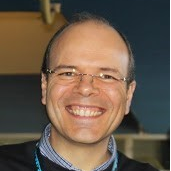Cultural Heritage - Materials, Techniques and Knowledge Perspectives on a Common Identity
A special issue of Heritage (ISSN 2571-9408).
Deadline for manuscript submissions: closed (5 November 2018) | Viewed by 23798
Special Issue Editors
Interests: cultural heritage; ceramics; glasses; lusters; mortars; pigments; oxides; nanomaterials; nanotechnology; synchrotron radiation; X-ray photo electron spectroscopy; scanning electron microscopy; atomic force microscopy; built heritage
Special Issues, Collections and Topics in MDPI journals
Interests: cultural heritage; mining heritage; mineralogy; crystallography; crystal chemistry; ceramics; glasses; mortars; rock weathering; synchrotron radiation
Special Issues, Collections and Topics in MDPI journals
Interests: material characterization; X-ray diffraction; SEM analysis; ceramics; surface analysis; EDS; ion beam analysis; chemical weathering
Special Issues, Collections and Topics in MDPI journals
Special Issue Information
Dear Colleagues,
This Special Issue of Heritage encourages the submission of contributions presented at the E-MRS 2018 Spring Meeting Symposium on Cultural Heritage (CH), held in Strasbourg, France, 18-21 June, 2018.
The Symposium dealt with tangible and intangible, natural and manmade, movable and immovable assets inherited from the past. Access, preservation and education on CH are essential for humankind evolution representing an irreplaceable source of life, inspiration and unity. There is a need for further studies and research to better understand the dynamic relationship between heritage conservation and the various dimensions it involves, from Natural Sciences, Social Sciences, Economical Sciences and Digital Sciences to the use of advanced and large-scale research infrastructures, as well as implications of sustainable development, with particular attention on the effect of natural hazards and climate change on CH.
This Special Issue of Heritage intends to be a common ground where challenges and solutions in the knowledge of arts, archaeology and ancient technology can be answered by the application of methodologies, techniques and solutions generally used in Materials Science and other related fields in Cultural Heritage studies. This Special Issue will stimulate and encourage scientific research devoted to the sustainable development of CH and to the positive contribution of cultural heritage management towards a sustainable environment, by promoting innovative research and practices and improving the compatibility of current materials and methods and the development and application of emerging solutions.
Contributions are welcome to provide a multidisciplinary forum for cutting-edge scientific and technological issues in art, archaeology and all cultural heritage concerns and perspectives involving the large and varied community of international experts.
Topics (not exhaustive) to be covered include:
- Sustainable solutions—materials and methodologies
- Multi-scale imaging and observation
- Modelling and theoretical approaches
- Ecological sustainability
- Dating and authentication
- Climate change
- Case Studies
- Social impact
- Tourism and economy
Prof. Dr. João Pedro Veiga
Dr. Giuseppina Padeletti
Dr. Anne Bouquillon
Guest Editors
Manuscript Submission Information
Manuscripts should be submitted online at www.mdpi.com by registering and logging in to this website. Once you are registered, click here to go to the submission form. Manuscripts can be submitted until the deadline. All submissions that pass pre-check are peer-reviewed. Accepted papers will be published continuously in the journal (as soon as accepted) and will be listed together on the special issue website. Research articles, review articles as well as short communications are invited. For planned papers, a title and short abstract (about 100 words) can be sent to the Editorial Office for announcement on this website.
Submitted manuscripts should not have been published previously, nor be under consideration for publication elsewhere (except conference proceedings papers). All manuscripts are thoroughly refereed through a single-blind peer-review process. A guide for authors and other relevant information for submission of manuscripts is available on the Instructions for Authors page. Heritage is an international peer-reviewed open access monthly journal published by MDPI.
Please visit the Instructions for Authors page before submitting a manuscript. The Article Processing Charge (APC) for publication in this open access journal is 1600 CHF (Swiss Francs). Submitted papers should be well formatted and use good English. Authors may use MDPI's English editing service prior to publication or during author revisions.







